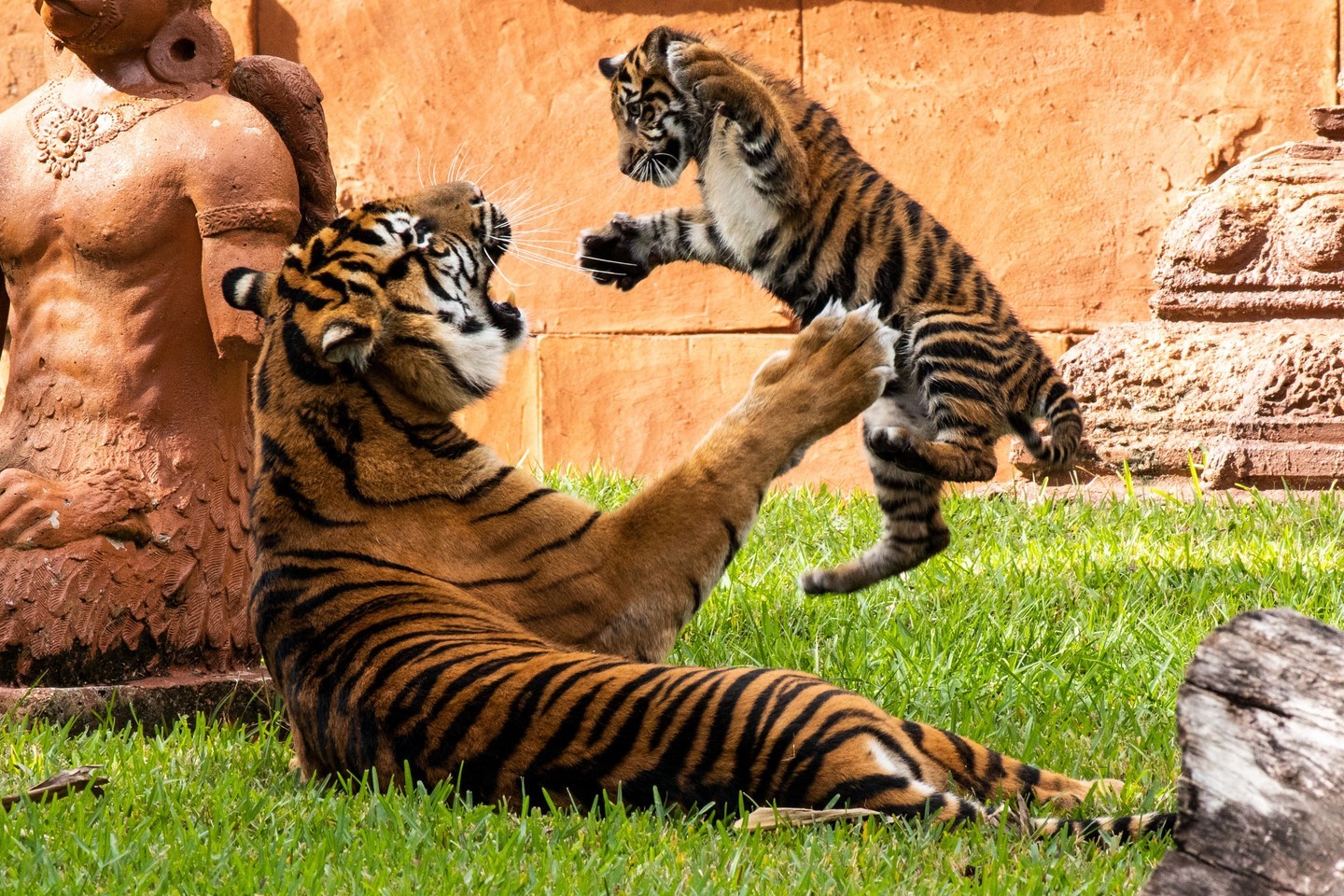– Discover the intriguing dynamics of tiger behavior exemplified by a captivating duo, Leeloo and Lani.
– Explore the importance of social bonds in these majestic felines and what they reveal about tiger sociology.
– Unveil the deeper significance of play and protection among tigers and how these behaviors contribute to their well-being.
– Delve into the role of modern zoos in conservation and education, highlighting the lives of individuals like Leeloo and Lani.
In the animal kingdom, countless tales of fascinating relationships and behaviors capture the imagination of nature enthusiasts and the general public alike. Take, for instance, the tiger duo that has recently caught the attention of many: Leeloo with her protective gaze and Lani with her playful antics. Together, they embody the essence of tigerhood—a majestic blend of vigilance and vibrancy.
Tigers are the largest cat family members and carry a sense of awe around them. Each movement they make is filled with grace and power, and their expressive eyes tell a story of a creature deeply connected to its environment. While often portrayed as solitary hunters, tigers also exhibit a plethora of social behaviors that are both fascinating and reveal much about their secretive lives.
The bond between Leeloo and Lani is a testament to the complexity of tiger sociology. Typically, tigers are known to live and hunt alone, fiercely guarding their territory from others of their kind. However, just like humans, they are not entirely asocial—mothers form strong bonds with their cubs, and tigers have been known to exhibit social tolerance at times, especially in captivity where their natural behaviors are adapted to a managed environment.
Leeloo’s steady gaze seems to come from a place of deep-seated instinct and care. Among tigers, females are highly protective of their young, and while Leeloo’s role isn’t necessarily maternal, her attentiveness towards Lani might be a remnant of this behavior. It’s a gaze that tells other members of the animal kingdom that she is vigilant and ready to stand against any potential threat.
On the flip side, Lani’s playful conduct isn’t simply a source of entertainment. Play is a crucial part of a tiger’s development, providing a means for young cubs to learn survival skills such as hunting and defending themselves. Watching Lani leap and pounce, one can see the echoes of ancestral training courses streaming through her actions.
These behaviors also serve a deeper purpose in the closed ecosystems of modern zoos. Such institutions are no longer places for the public to gawk at exotic creatures but have evolved into centers for conservation and education. Tigers like Leeloo and Lani serve as ambassadors for their species, helping researchers understand their behavior and biology, which is crucial for protecting these magnificent animals in the wild.
But how effective are zoos in these noble endeavors? It’s an undulating wave of challenges and triumphs. The conservation strategies, which often include breeding programs, have produced mixed results, with some species bouncing back from the brink of extinction while others remain perched precariously on the edge. Zoos offer a haven for endangered species, protecting them from poachers and habitat loss, and also provide valuable genetic reservoirs that can help bolster wild populations.
Education is another feather in the cap of modern zoological parks. Bringing humans face-to-face with Leeloo and Lani evokes a sense of connection and a desire to learn more about these creatures and their fates in the wild. Understanding tiger behavior contributes to this educational mission, as it can lead to better wildlife management practices that consider tigers’ needs and natural behaviors.
Complex care is involved in maintaining the well-being of the tigers in captivity. It’s a tapestry of nutritional plans, behavioral enrichment, and medical care that aims to mimic the wild as closely as possible. Lani’s playful behavior is encouraged and facilitated through enrichment activities designed by caretakers who spend time understanding each tiger’s personality and preferences. It is an art and a science to keep these giants physically healthy and mentally stimulated.
Leeloo’s protective nature, while less needed in the safe confines of a well-maintained habitat, still serves an important role in the social dynamic of this duo. It highlights the natural inclination of tigers to defend and establish hierarchies, which researchers and keepers must understand to ensure that all social needs are met, preventing stress and aggression that may arise from neglecting these inherent behaviors.
The journey of these two tigers is an ongoing saga of learning and discovery, full of mini-narratives that can help us understand the broader narrative of tiger conservation. Each strand of their behavior unwinds a piece of the puzzle that is their species’ survival. Observing Leeloo and Lani reminds us of the priceless value of every individual animal. This reminder prompts us to consider the broader implications of our actions on their wild counterparts.
In conclusion, the story of Leeloo and Lani is more than just a tale of tiger behavior—it is a mirror reflecting the intricacies of tiger sociology, the conservation challenges facing these majestic creatures, and the pivotal role zoos play in education and research. It’s a narrative interwoven with threads of care, understanding, and the eternal hope that through efforts in conservation and education, the future generation will witness the awe-inspiring presence of tigers in the wild.
So, as we peek into the lives of Leeloo with her protective gaze and Lani with her playful antics, we are reminded that they are not just exhibits in a zoo but living, breathing creatures with their own stories, playing a vital role in the grand tapestry of ecology and conservation. They are a perfect duo, a symbol of nature’s beauty and fragility.
*****
Source Description
Leeloo’s protective gaze and Lani’s playful antics – tiger duo is perfect! 🐅🧡
📸: Kenneth


